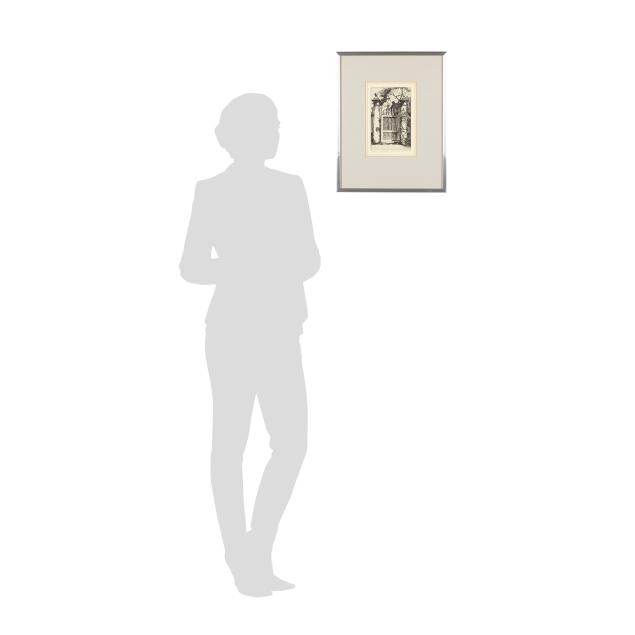
Lot 3077
Alfred Hutty (American, 1877-1954), The Gate in the Garden of the George Edwards House, Charleston, S.C.
Explore more items like this one.
Visit our Prints, Multiples & Photographs Department Prints, Multiples & Photographs
Lot Details & Additional Photographs
Image size 8 3/8 x 5 3/8 in.; Frame dimensions 18 3/4 x 14 3/4 in.
Literature:
Sara C. Arnold and Stephen G. Hoffius, editors, The Life and Art of Alfred Hutty: Woodstock to Charleston, The University of South Carolina, 2012, p. 129, No. 28.
Alfred Heber Hutty was born in the Midwest and received a scholarship to the Kansas City School of Fine Arts at the age of fifteen. As a young man, he was employed as a glazier, ultimately leading to employment at the Tiffany Glass Studio in New York City. In 1908, he moved to Woodstock, New York, where he studied under Birge Harrison, living in a rural home with an emerging art colony.
Hutty served as a marine camouflage artist in the First World War, before settling in Charleston, South Carolina. He became the director of the Carolina Art Association (now the Gibbes Museum of Art) and steadily became a vital part of the local cultural community, along with fellow artists Alice Ravenel Huger Smith, Elizabeth O'Neill Verner, and Anna Taylor. He was a founding member of the Charleston Etchers Club, garnering great success as a printmaker.
By 1926, Hutty was spending winters in Charleston and summers in Woodstock until his death in 1954. Throughout these decades, Hutty participated in numerous one-man and group exhibitions at national museums and was invited to membership in selective art societies. Hutty's contributions to the cultural vibrancy and tourism of his adopted home were recognized in the city's daily newspaper: “Charlestonians cannot do as much for this brilliant artist as he has lovingly done for Charleston.” (Adapted from The Johnson Collection)
Slight toning to the sheet, not examined outside the frame.





